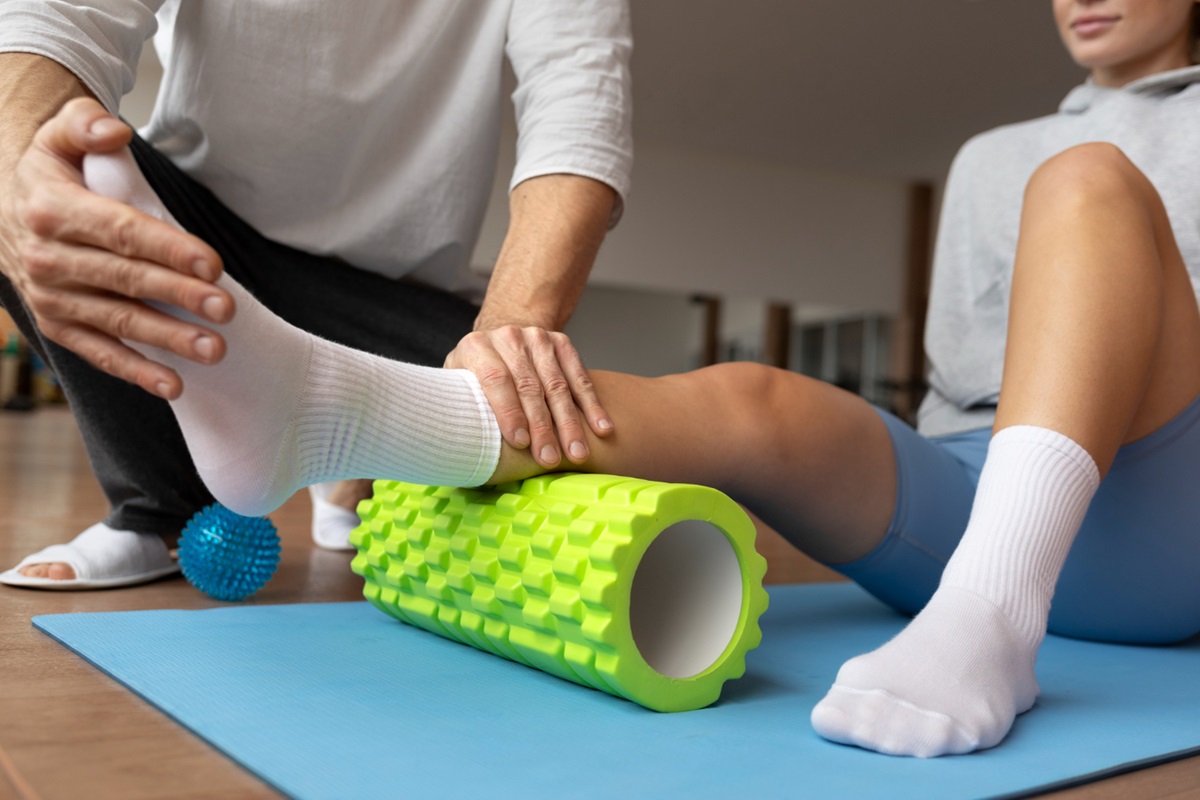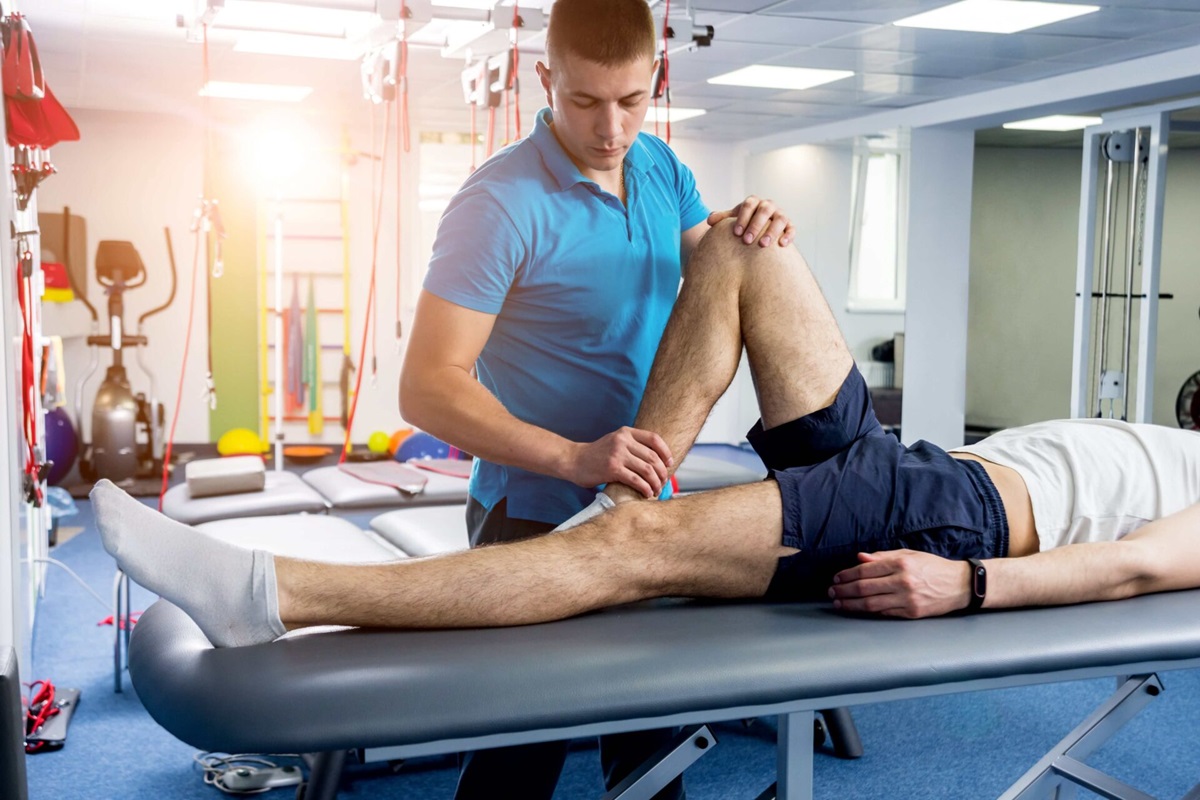ACL injuries can be life-changing for athletes and active individuals, affecting mobility, strength, and confidence. Whether it’s a mild sprain or a full tear, proper rehabilitation is critical to a successful return to activity. Physical therapy for ACL recovery plays a central role in regaining knee function, restoring stability, and reducing the risk of future injury.
With a structured plan and support from experienced therapists, patients can recover from an ACL injury and return to the activities they love. This blog explores everything from the nature of ACL injuries to the personalized treatments and advanced techniques used in physical therapy for ACL recovery, including techniques seen in ACL rehab forums from therapy – week 1 to therapy – week 10.
Understanding ACL Injuries and Their Impact
An ACL injury can significantly disrupt movement, stability, and overall knee function—especially for athletes and active individuals. Gaining a deeper understanding of what leads to these injuries and how they present is the first step in achieving optimal recovery. In this section, we explore the nature, causes, and signs of ACL sprains to lay the groundwork for effective treatment.
What Is an ACL Injury?
The anterior cruciate ligament is the most commonly injured ligament in the knee joint, accounting for nearly half of all knee-related injuries. This ligament is crucial for providing stability during movements such as pivoting, jumping, and abrupt directional changes, especially in athletic activities.
The anterior cruciate ligament (ACL) is one of the main stabilizing ligaments in the knee. It helps control rotational stability and prevents the tibia from sliding out in front of the femur. An ACL injury occurs when the ligament is stretched, partially torn, or completely ruptured. ACL injuries are classified into grades, with Grade 1 ACL sprain representing a mild overstretch without a tear.
In cases of ACL sprains, especially Grade 1, physical therapy for ACL sprain may be sufficient to restore normal function. These milder injuries still require proper management to avoid long-term instability.
Causes and Risk Factors
ACL injuries are not uncommon, particularly in athletes. In one study alone, 617 ACL injuries were documented over the course of 9,452,180 athlete exposures (AEs), translating to an injury rate of 6.5 per 100,000 AEs. This statistic underscores just how prevalent and impactful ACL trauma can be in sports settings.
ACL injuries often result from sudden stops, pivoting, or directional changes during high-impact activities like soccer, basketball, or skiing. Poor quadriceps control, abnormal gait patterns, weak hamstrings, and prior injury history are major contributors. Limited proprioception, joint laxity, and high tibiofemoral shear forces can also increase injury risk.
Understanding these causes is essential in both prevention and physical therapy for ACL recovery, especially during prehabilitation or pre-surgical stage.
Symptoms of an ACL Sprain
What does an ACL sprain feel like? Common symptoms include a popping sound at the time of injury, joint effusion, swelling, instability, and difficulty bearing weight. Some individuals may experience persistent instability or trouble gaining full knee extension. Pain varies based on the grade of injury. A clinical exam is often followed by imaging to confirm diagnosis and inform the rehabilitation program.
The Role of Physical Therapy in ACL Recovery
Rehabilitation guided by a licensed physical therapist is essential to overcoming an ACL injury. Beyond simply restoring strength, physical therapy rebuilds neuromuscular control, joint stability, and overall confidence in movement. This section highlights how timely and tailored therapy can accelerate recovery and help prevent setbacks.
Importance of Early Intervention
Starting physical therapy for ACL recovery early—within days or weeks of injury—can significantly influence long-term outcomes. Early care focuses on pain control, reducing swelling, restoring range of motion, and initiating gentle strengthening exercises such as heel slides, passive knee extension, and quadriceps activation to prevent muscle atrophy.
This stage often involves use of the PEACE and LOVE protocol and supportive devices such as knee brace, crutches, compression, ice, and elevation.
Phases of Rehabilitation
ACL rehab is divided into phases:
- Phase 1: Pain and swelling control – Modalities such as transcutaneous electrical nerve stimulation, static quads/SLR, wall slides, and patellar mobilization
- Phase 2: Strength and stability – Includes weight transfers in standing, prone hamstring curls, and side-lying hip abduction/adduction
- Phase 3: Functional training – Incorporates gait pattern training, single-leg jumps, agility training, and footwork drills
- Phase 4: Return to sport – Emphasizes sport-specific exercises, hop test, and level I sports readiness
Throughout these phases, physical therapy for ACL sprain addresses unique patient needs using a progression based on healing potential and subjective knee function.
Customized Treatment Plans
No two ACL injuries are the same. Customized rehab programs consider the patient’s activity level, injury severity, and goals. Therapists use interventions like aquatic therapy, open kinetic chain (OKC) exercises, closed kinetic chain (CKC) exercises, bracing, and gait retraining. These are tailored to enhance functional knee stability, encourage normal gait pattern, and improve knee extensor strength.
Physical Therapy for ACL Sprains

ACL sprains—particularly Grade 1 injuries—can often be treated successfully without surgery. Physical therapy offers targeted interventions to reduce pain, restore movement, and strengthen the knee. This section focuses on strategies, timelines, and tools used in the conservative treatment of ACL sprains.
Grade 1 ACL Sprain Recovery Time
Recovery time for a Grade 1 ACL sprain is typically 2 to 6 weeks with conservative management and physical therapy. During this time, the focus is on pain control, reducing joint effusion, restoring range of movement, and re-establishing quadriceps strength. Modalities may include patellar self-mobilisations, prone hang exercise, and standing terminal knee extension.
Rehabilitation Strategies
Rehabilitation for ACL sprains incorporates:
- Muscle strengthening for quads, hamstrings, and glutes through hamstring set, prone straight leg raises, and double-leg quarter squats
- Mobility exercises like passive knee bend, wall slides, and passive knee extension
- Balance and proprioception exercises including coordination exercises and neuromuscular control drills
- Use of functional bracing and taping for support and injury prevention
These strategies form the foundation of successful physical therapy for ACL sprain and help ensure lasting results.
What Does an ACL Sprain Feel Like?
Recognizing the early signs of an ACL sprain is essential to seeking prompt and proper care. From the initial symptoms to diagnostic testing, understanding the experience of an ACL injury helps patients take control of their recovery. This section breaks down what to expect and how diagnosis guides the next steps.
Recognizing the Signs
Patients often ask, “What does an ACL sprain feel like?” Typically, there’s a sudden sharp pain, followed by swelling, stiffness, and a sense of instability. A popping sensation or the knee buckling under weight is a common indicator. In milder cases, discomfort may only appear during dynamic movements or certain angles like 70 degrees of flexion.
Importance of Accurate Diagnosis
Since ACL sprains can mimic injuries such as meniscal tears, patellofemoral symptoms, or collateral ligament sprains, thorough clinical and diagnostic testing is necessary. This ensures proper planning of your physical therapy for ACL recovery and avoids unnecessary delays in restoring full range of motion and joint stability.
Advanced Rehabilitation Techniques
As patients progress through ACL recovery, advanced techniques are introduced to support long-term performance. These methods go beyond basic rehab to reestablish movement efficiency, strength, and injury resistance. This section explores the tools and training techniques used to optimize outcomes for active individuals.
Strength and Conditioning
Building strength is key to protecting the ACL and ensuring full return to activity. Physical therapists use progressive resistance training such as side-lying hip adduction, double-leg heel raises, and open kinetic chain exercises to target lower body strength. Attention is paid to managing compressive loads and minimizing anterior tibial translation.
Neuromuscular Training
Integrating neuromuscular control drills into physical therapy for ACL recovery supports improved coordination and reduced risk of reinjury. This includes dynamic movements, gait pattern retraining, and co-contraction training such as hamstrings-quadriceps co-contraction.
Functional Movement Training
Functional training bridges the gap between rehab and sport. It involves exercises that mimic sport demands, such as extension chain training, cutting, jumping, and directional change. These help athletes restore optimal biomechanics, improve functional bracing, and enhance stability.
Preventing Re-Injury and Long-Term Knee Health

Successful ACL recovery doesn’t stop at rehabilitation—it continues through maintenance and awareness. Preventing re-injury is just as important as initial healing, especially for athletes returning to high-impact activity. This section outlines how patients can protect their knees for the long term through education and consistent care.
Ongoing Maintenance Programs
Even after recovery, patients are encouraged to continue a rehabilitation program that includes strength, mobility, and proprioception exercises. This proactive approach supports long-term subjective knee function, improves confidence, and prevents acl graft strain.
Education and Awareness
Patient education includes recognizing red flags for reinjury, understanding progression timelines like acl rehab forum: therapy – week 3 or week 5, and incorporating smart return-to-play decisions. Understanding how to balance conservative treatment and postoperative rehabilitation is essential for sustained success.
Why Choose Backcountry Physical Therapy for ACL Rehabilitation
At Backcountry Physical Therapy, we understand that ACL recovery is about more than just healing—it’s about reclaiming strength, mobility, and confidence in every step. Our team is committed to delivering cutting-edge, personalized care rooted in evidence-based practice. Whether you’re recovering from a surgical repair or managing a sprain conservatively, we provide the expert guidance and structured progression needed to return safely to your sport or active lifestyle.
Specialized Expertise
At Backcountry Physical Therapy, our clinicians are experienced in treating ACL injuries through all stages—from acute management to post-surgical stage and advanced performance. We incorporate modalities like water-based fitness programs, water treatment, and sport-specific conditioning tailored to your goals.
Personalized Care
Each treatment plan is built around the patient’s lifestyle, sport, and goals. Whether recovering from a surgery or managing a Grade 1 ACL sprain, our therapists ensure individualized attention and progression. From pre-operative optimisation to return to sport, your recovery is always supported.
Commitment to Patient Success
We’re dedicated to helping you move better, faster, and with confidence. Our goal is not only recovery but return to full activity without limitations. If you’re navigating physical therapy for ACL recovery, trust us to guide your journey every step of the way.
Request Appointment today to start your personalized ACL recovery plan with our expert team.
Conclusion
ACL injuries can feel overwhelming, but with the right guidance and a focused rehabilitation plan, recovery is entirely possible. From understanding what an ACL sprain feels like to managing Grade 1 ACL sprain recovery time, the role of physical therapy for ACL injuries cannot be overstated. Whether you’re aiming to get back on the field or simply regain confidence in your movement, physical therapy for ACL recovery is your path forward.
FAQs
How long should you go to PT after ACL surgery?
Most ACL rehab programs span 4 to 9 months depending on surgical outcomes and progress. Your therapist will adjust your program over time based on mobility, strength, and performance goals.
Can a torn ACL heal with physical therapy?
Partial tears and sprains may improve with physical therapy for ACL sprain alone. Complete ACL tears typically require surgery, followed by postoperative rehabilitation and targeted physical therapy for ACL recovery.
How to make ACL recovery faster?
Commit to your therapy plan, stay consistent with exercises, and communicate openly with your therapist. Use smart recovery strategies like aquatic therapy, ice, compression, and proprioception training. Early intervention, progressive loading, and proper nutrition also contribute to faster recovery.



